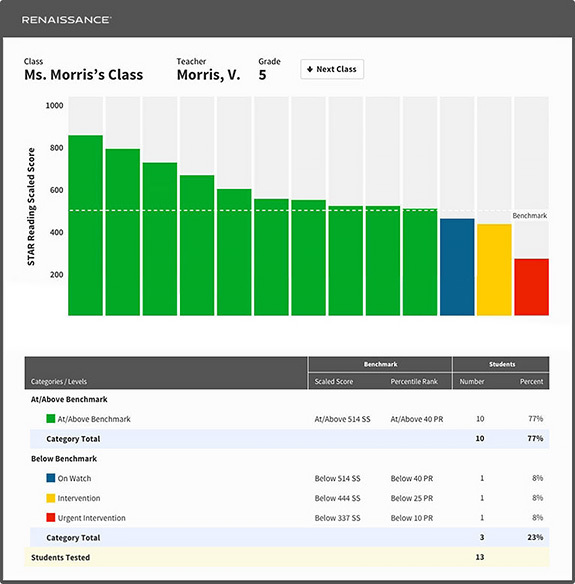David DuLac’s Updates
Update # 4 Renaissance STAR 360
Description:
The example that I am choosing to write about is the Renaissance STAR 360®. This computerized program is used at my school as a screener in the areas of early literacy, reading, and math. All students in grades K-2 take the STAR 360® at least 2 times and 3 times if they are in grades 1 and 2. As a screener, students who fall within our “intervention” groups (coded as yellow or red by the program), these student are assessed once a month to track their progress. If a student falls within the “watch” level (coded as blue by the program), than those students are monitored within the classroom by the teacher and may have an additional testing every other month or as desired by the teacher. Students who were determined to be "on" level (coded as green by the program) were on their projected instructional path.
The program is a formative assessment designed to provide the classroom teacher with insights into planning for each student’s needs. As mentioned, we use it primarily as a screener. It is aligned to the Maryland College and Career Readiness Standards, and while the company states that it is a predictor of student performance, this is in question and will be discussed in the analysis section of the paper.
Analysis:
There is a one-time fee for STAR Reading is $1,599.00 per school. It is web-based and includes the tool, software/technical manual, installation guide, testing instructions, remote installation and setup. The professional development is very beneficial and was a reasonable cost that was built into the system purchase. I am not sure what the STAR Math cost the system. Reportedly, the cost for subsequent years: $0.99 per student per year. While there are some fiscal concerns that chief concern that our system has experienced is that as the student move up in grade levels, the reliability decreases. My personal experience at my school is that we delay testing our kindergarteners until after December. Even at this point their ability to control the technology and to take the assessment seriously is often a question. We end up reassessing one on one if we have a concern with their results. This concern is echoed by our 1st and 2nd grade students as well. All of that has an impact on the reliability and we question the ability to truly predictor of student success.
As a screener, we do see some benefits and we use the data as one data point in our decision making process. We also administer an IRI in reading to our students as well as an aligned math chapter and unit tests to verify our data. If all of the data is consistent, we will assign intervention groups as outlined aboveWith most of these tools, the STAR 360® is one piece of a diagnostic process, but they do not remove the teacher as the person who truly has the best insight into the students’ progress.
https://www.youtube.com/watch?v=zu7xxm0BOZQ
The above link is a quick tutorial in using the STAR 360® program.
What we have found is that although this assessment provides us with another data point, it does not replace the teacher who has the clearest understanding of the progres of his or he students.


